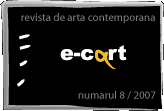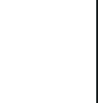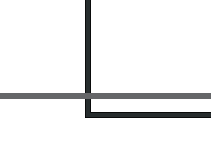Yukihiro Taguchi
http://spazieren.exblog.jp/i4
<Moment> [Exhibition: 17. 2 ~ 13. 3. 2007 Berlin]
For the exhibition <Moment>, I took of the woodpannels covering the floor of the gallery and constructed every week another installation exclusively out of them, inside the gallery: a tennis floor, where the visitors could play tennis, a cinema hall, where I projected Japanese films of young directors, a concert hall for experimental music and finally a finissage-party space, with a big table and benches, where I served food and drinks.
<Auf> [Exhibition:"Speed up your life!" 16. 11. ~ 30. 11. 2006 Hamburg]
Before <Moment> there was an exhibition, which had a similar concept. Here I rised the carpet from the floor and there was a gate where you could go through, inside, under the carpet. There I showed also a video, which I did, by filming with a fixed camera on different streetpavements everything that was appearing in its focus.
<Moment>, the title signifies a moment from a movement. Usually you cannot notice these moments. I am interested in the obvious, in elements, movements or moments. When the exhibition was finished, I was sitting there with the gallerist, the woodpaanels where back on the floor, in their usual position, but we where feeling very weird. Where were all the moments from before? The situation when an object or person dissapears from its initial, usual position, is weird. In this work, I stopped: moments of the flow of the surface (the floor), moments from possible situations or moments from the time of each one who participated at these actions. The surface of the earth is round, inclined. By positioning the floor vertically and creating out of this – new situations, I stopped the direction of this inclination and there resulted new moments.
From the possible directions in which Yukihiro Taguchi's works can lead, I will pick up space, since his construction of space is tricking categorial interpretations, of with which we usually could make use. His space is not static, but it is also not mobile. It is not virtual, it is not concrete. It is not fluid, it is also not temporary fixed. It is not abstract, but still you are not shure you can catch it. It is a space with which you are invited to interact, but your interaction is not the one which constitutes the meaning of the work and the space in itself is also not a symbolic one. It could be called a <functional space>, but its functions are only partial. You can play tennis, watch a movie or party afterwords in it, but still there is more on it, than a space for action. You could call it a <conceptual space>, since the meaning unfoldes indepently of any narration, but the conceptual content is not pre-determined. Finally, I thought, it could be called a <performative space>, since it emerges, as Yukihiro explaines, from relations. It is a place, which speculates the diagramm of time tuned on the diagramm of space and the multiple - coincidental, studied, social, personal - relations it generates. This space is a place of temporal presence, presence which emerges from a row of transformations, passing consequtive contexts.
<Domino> [Exhibition 4. 11. ~ 2. 12. 2006 Rotterdam]
Willem Besselink and Guus Vreeburg have a private gallery in their house: Het Plafonds (http://www.hetplafond.org/). I was very interested in Guus' office, which has a huge library, a private space which is formed by books. So I asked Guus, which is an architect, to be integrated in this performance. I ordered the books in this domino, from the oldest to the newest book he has and asked him to read first from his first book, then, kick it, in order to start the game, and after all the domino pieces fall and its gets to his latest/last book, to read from it, the book he is himself at the moment reading.
This work is about a story of books, or a personal story of Guus, a private story. I wanted to show how our thinking, our ideas are emerging fragmentarily from different sources, friends, books, talks, which get distilled into a personal idea, a personal history. Like in all my works, I searched my idea in the existing space and it developped from the space. This is my working material. In this case Guus' space and his books.
<suppotable space> 2003.Tokyo
This is an installation on tension. Tables, chairs, different other objects from a room, were fixed between the ceiling and the floor through tension. The whole room is just full of tension: the table is suspended in the air or on the wall. This is a dangerous action: if I remove one object, the whole construction is falling appart. The visitors where scared when they found out that nothing is fastened, just fixed by tension.
What is interesting to me, are relations in space. Between every two objects there results a space and inherent tensions. I cannot be alone; without me, the other objects do not exist. The fact that I exist means that all the other things exist too, and about these relations we are very seldom aware. I try to find these situations, to feel them. These seem so small things, but these obvious, everyday situations are for me very big matters. What I do is UMräumen (Germ. : to change the structure, elements of a space). I want to change the composition of the space and of the relations in space, without bringing anything more, or taking anything out, but by turning the situation, in order to catch the possible moments of these relations.
Yukihiro starts from evidences, deconstructing and analysing, with philosophical metodology and patience. But suddenly the order of evidence is turned upside down, without being negated. Affirmative, his games change suddenly their rules, without cheating, without distance, they open up a short disorder, which reveals the presence of a underneath system. Meaning comes up, on spatial coordinates. This structure of space is mathematically composed on time: a second of tension, the first domino-book falls and the whole space gets by itself in motion, traverses a temporal loop and while back to the initial point, the relations contented (visitors and objects, objects and their place etc.) have suddenly changed. Condenced presence in space is stated: air, tension. Their surplus or their lack generate a crisis, which can also be called performance. When Yukihiro tired of acting himself in his airbags, decided to propose a game inside the bag, to the visitors of his installation, he slowly took the air out of the airbag and filmed the scene from outside: <Musical chairs>, performance 2007,Tokyo.(http://www.youtube.com/results?search_query=yukihiro+taguchi&search=Search). Dis-located from usual patterns of reactions, with a different sense of normality and evidence, the actors "performed".
<field work ~Pumpen~> [5. 2006 Berlin]
The air bags are put in the space between different objects. These are in-between places, which we are not noticing usually, which we are not aware of. I mark the existence of these spaces. Also the air which exists here, is seldom perceived. People asked me on the street, in the bus: "What is this?" I said: "This is air, it is the space in-between. You haave already seen this, it is nothing special." This concept is not far from the one in the work with tension, another "in-between of space".
<Gift> 2006.Berlin
This works title starts from the double meaning of the word „gift“, in English and in German (=poison). I put an airbag on my head and people can give me air through it. If air is too much, it becomes a poison, if it well balanced, than it is a gift. But the presence of air is also rarely perceived, air is "normal". Nowadays air interests me alot, I work alot with this element.
Yukihiro Taguchi's space could be called performative, not because it involves performance and not only because it brings into analysis its inherent relations, but because through it, certain ideas are brought out, to be negociated*. It is a field of conceptual experiment: for the artists, who states the rules and the public, who gets involved. But the artist does not ask from the public an identification with his conceptual positions, he doesn't demonstrate by his work a pre-established theory, or plead for concrete solutions, he does not ask from the visitors any redirectioning of their social or personal attitudes, but proposes a game with the existing possibilities in space. The space also is not meant to ask for an empathic identification, or a subjective acceptance of its pre-determined content. But it generates certain ideas which can be exercised by the audience, in a conflictual or passive manner. The implications in Yukihiro's work can be multiple: social, political, but they remain open. Important doesn't seem a militant, demonstrative educational content, but a certain ability to speculate on concepts, to manipulate creatively a content. Thinking about this space and this performativity, actions that could seem similar in the so-called classic conceptual art or performance of the '60-'70-'80, seem very different: there - a fixed concept is transformed in a free action, which will finally demonstrate this concept; here - conducted actions open up a field of multiple conceptual possibilities. In Yukihiro Taguchi's work this game is emerging from and turns back to space. Postconceptual art, states the end of theory and the beginning of discourses**. In opposition to the universal, generally to be accepted theory, the discourse is dependent on particularity and individuality. In this spirit, through the performativity of space, Yukihiro's work rather de-constructs than constructs concepts.
* Reference to some aspects in the theory of Nicolas Bourriaud in Esthétique Rélationnel, Paris, 1998.
** Jan Winkelmann, Das Ende der Theorie, der Anfang der Diskurse, Material, Nr. 4, Herbst/Winter 2000




















